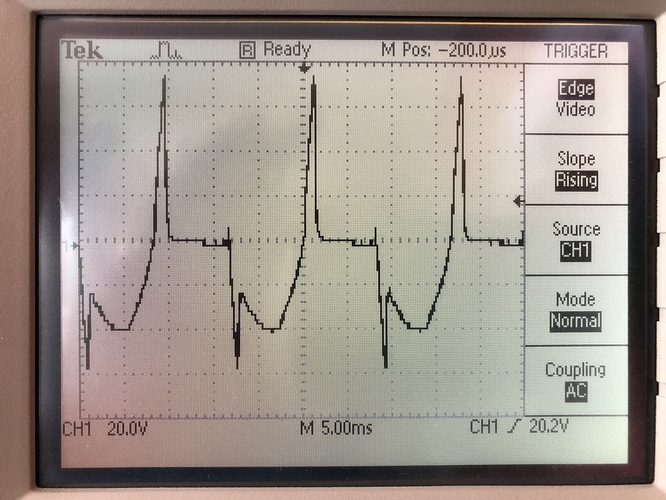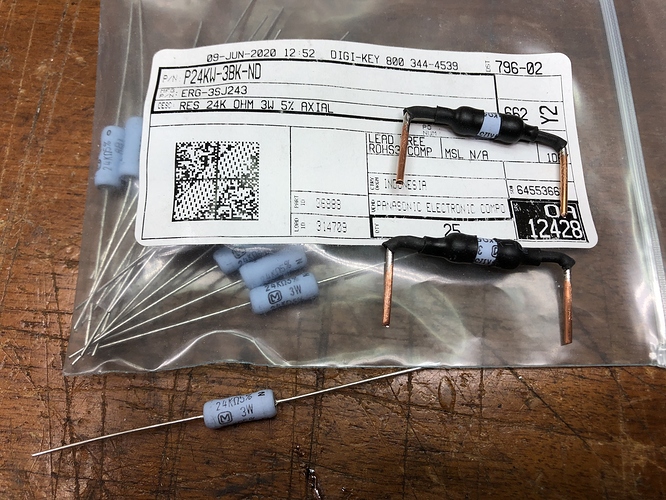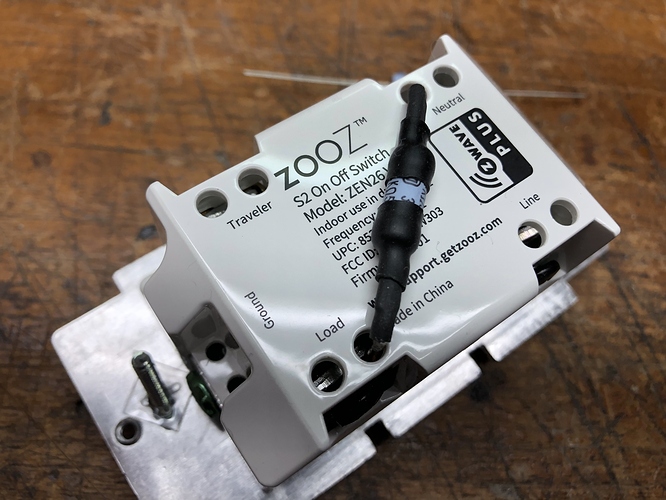I’m using a 24k 3W power resistor.
And there is no ac or dc rating on resistors. Only caps.
The zooz zen26 and Zen27 are horrible without a load on them. I know Zooz recommends at least a 25w load but hitting 80v no load voltage is a little silly. The zen26 will not even switch properly using the paddle with a small load. Inovelli red dimmers are almost as bad with open voltage.
The problem with some types of led bulbs is they will not conduct any leakage until a certain voltage is hit, making them glow when off.
Zwave controller behaviour can be erratic as well when switching on.
I have yet to hit an issue that the 24k resistor doesn’t take care of. And yes I buy them from digikey and solder 14 awg wire on so it straps across the back of the switch.




